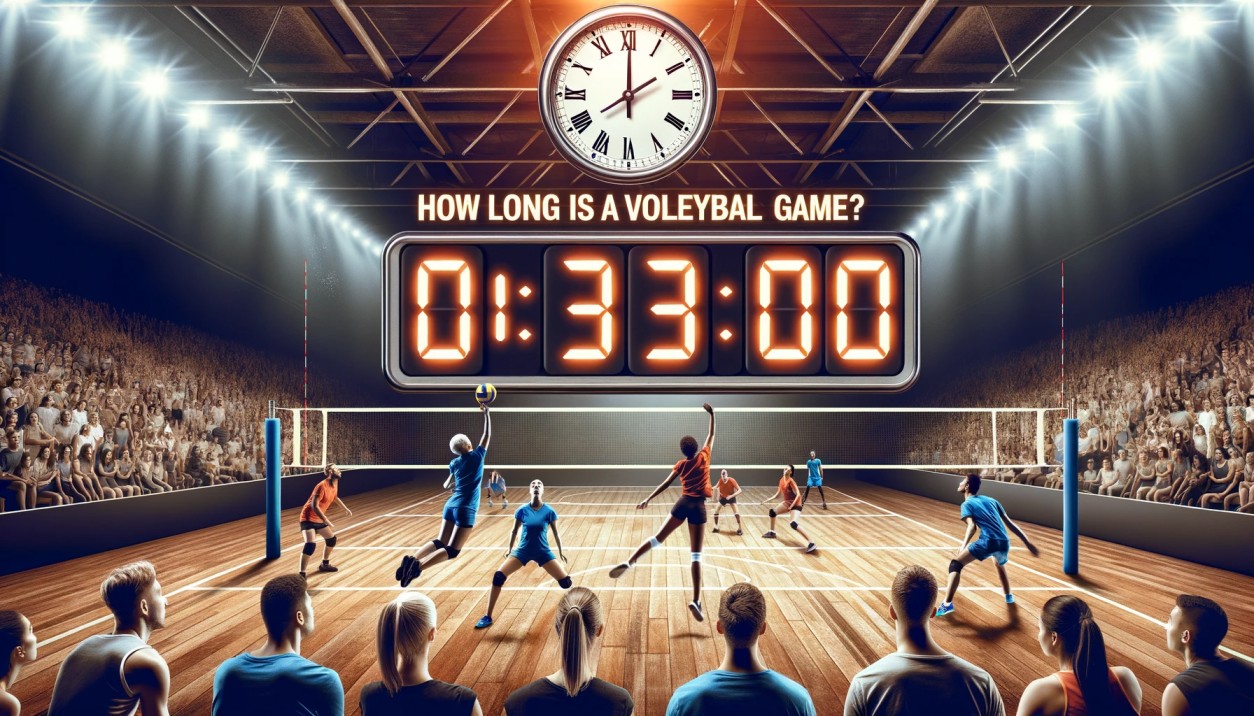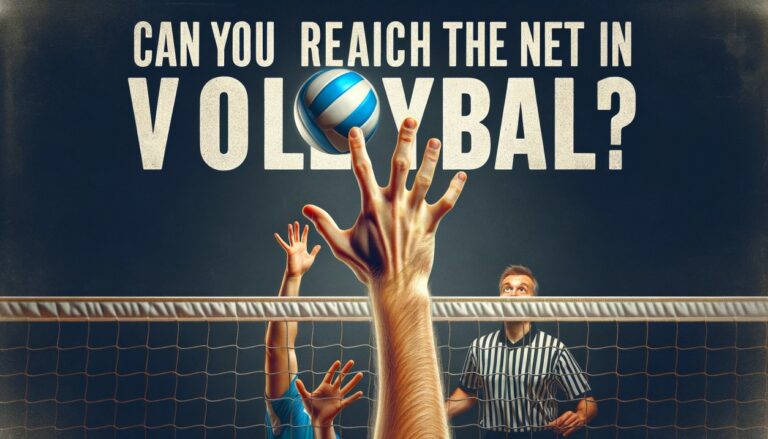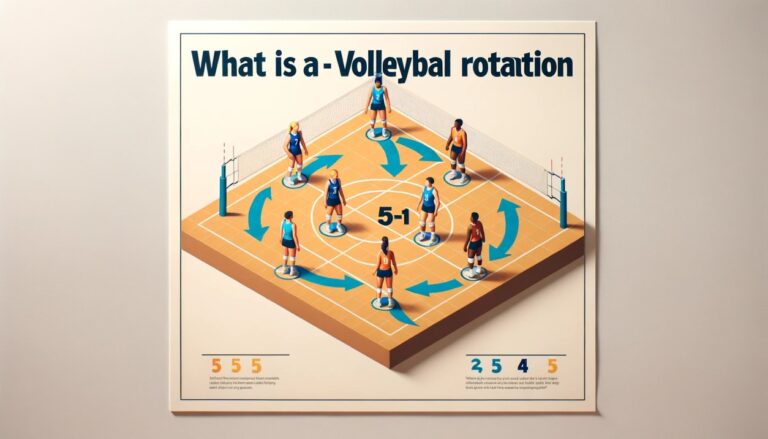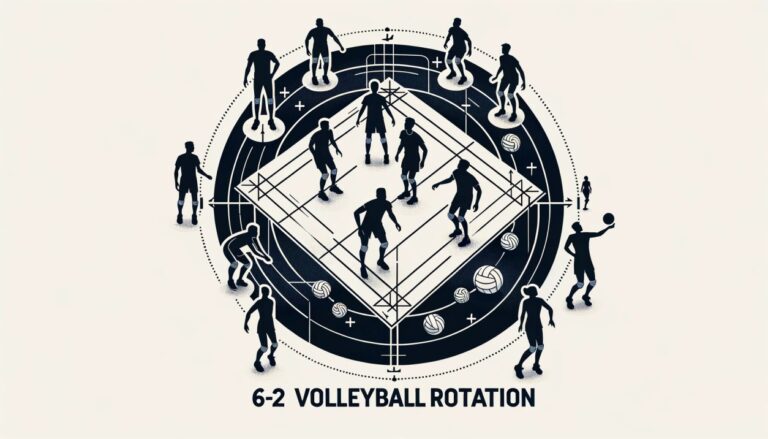How Long is a Volleyball Game: Your Complete Guide
Introduction
In this article, complete information about How long is a volleyball game is given. Have you ever planned a day around a volleyball game, only to be surprised by its unexpected length? Whether you’re a spectator or a player, understanding the typical duration of a volleyball game can be crucial for planning and preparation.
In this article, we’ll dive deep into the intricacies of volleyball timing, shedding light on what influences the length of a game and what you can expect when you next hit the court or stands.
How Long is a Volleyball Game: Explained
The Basics of Volleyball Game Structure
- Volleyball Match and Its Sets: A standard volleyball game, often referred to as a match, is divided into sets. Typically, a team needs to win three out of five sets to claim victory. Each set is played to 25 points, but a team must win by at least two points. This means sets can sometimes extend beyond the 25-point mark.
- Point System’s Role: The point system plays a pivotal role in determining the game’s length. Unlike some sports where the clock dictates the end, volleyball relies on points. The more closely contested a match is, the longer it can potentially last, especially if it goes to a deciding fifth set, which is played to 15 points but, like the others, requires a two-point winning margin.
Factors Influencing the Duration of a Volleyball Game
- Team Skill Levels: A game between two evenly matched teams can lead to longer rallies and more extended sets. Conversely, if one team dominates the other, the match might wrap up quickly.
- Timeouts and Breaks: Each team has a specific number of timeouts they can use during a match. These breaks, along with intervals between sets, can add to the overall duration.
- Intensity and Competitiveness: High-stakes matches, like finals or games between long-standing rivals, might see players taking extra time between points, leading to a longer overall game duration. The sheer will to win can stretch a game as teams battle fiercely for every point.
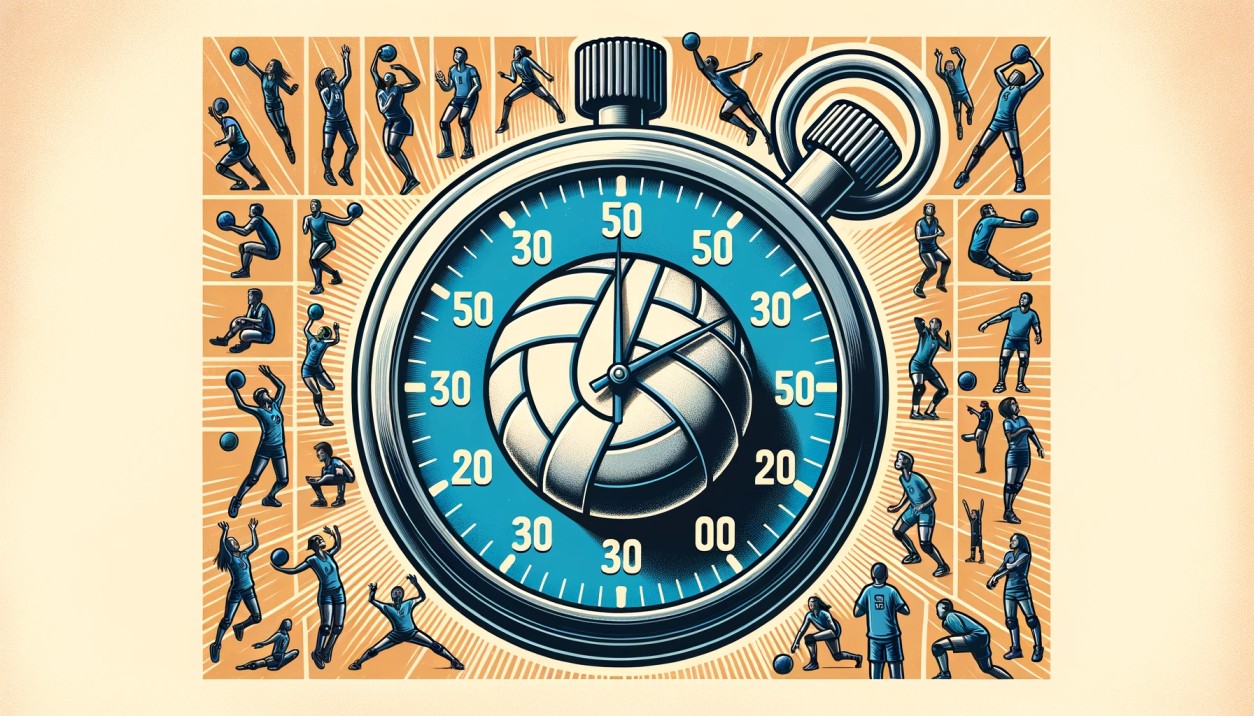
Comparing Different Volleyball Formats
- Beach Volleyball vs. Indoor Volleyball: Beach volleyball, played with teams of two on sand, often has shorter matches than its indoor counterpart. The reason? Beach volleyball sets are played to 21 points (except for the deciding set, which is to 15). Indoor volleyball, with teams of six, has sets to 25 points. The sand in beach volleyball also tends to slow down rallies, making points quicker.
- Professional vs. Amateur Games: Professional matches, with their rigorous standards and high stakes, can sometimes last longer due to the evenly matched skill levels. In contrast, amateur games, especially at lower levels, might see more errors, leading to quicker points and shorter matches.
- Men’s vs. Women’s Volleyball: While both formats are thrilling, men’s games often feature faster serves and quicker rallies. However, the duration isn’t significantly different between men’s and women’s volleyball, as both are determined by the same point system and rules.
Factors That Make A Volleyball Game Longer or Shorter
Volleyball, a popular sport enjoyed worldwide, can vary in duration depending on several factors. Whether you’re a player, coach, or spectator, understanding these factors can help you plan and strategize better. Here are the primary factors that can influence the length of a volleyball game:
Number of Sets
- Traditional indoor volleyball matches are played best out of five sets. The first team to win three sets wins the match. However, if both teams win two sets each, a fifth and deciding set (often called the tiebreaker) is played.
- In some tournaments or leagues, matches might be played best out of three sets, which can make the game shorter.
- Each set (except the deciding set in some rules) goes up to 25 points, but a team must win by at least two points. This means that sets can extend beyond 25 points, making them longer.
Timestops
- Timeouts: Each team is usually allowed a certain number of timeouts per set. These breaks can add up, especially if both teams use all their allotted timeouts.
- Technical timeouts: In some competitions, there are mandatory technical timeouts, usually when the total points scored by both teams reach a certain number.
- Injuries: If a player gets injured and needs medical attention, this can cause a significant delay.
- Challenges: Some leagues and tournaments allow teams to challenge referee decisions using video replay. This can add extra time if multiple challenges are made during a match.
Beach vs Indoor
- Beach volleyball is typically played in a best out of three sets format, with each set going up to 21 points (except the tiebreaker, which goes up to 15). This generally makes beach volleyball matches shorter than indoor matches.
- The sand surface in beach volleyball can slow down the game, as players find it more challenging to move quickly. However, the fewer number of sets and points required to win usually compensates for this.
- Indoor volleyball has a faster pace due to the hard court surface, but as mentioned earlier, the potential for five sets and the longer set point requirement can make these matches longer overall.
FAQs
· How long is a professional volleyball game on average?
Most professional volleyball matches last between 1.5 to 2.5 hours, depending on the factors discussed earlier.
· What’s the shortest and longest a volleyball game can last?
The shortest games, especially ones that end in straight sets, can wrap up in just an hour. On the flip side, intense five-setters can stretch beyond 3 hours.
· How does the scoring system affect the game’s duration?
Volleyball uses a rally scoring system, meaning a point is scored on every serve. This system ensures games progress at a steady pace. However, closely contested matches can extend due to the need for a two-point winning margin in each set.
· Are there any rules about game length in official tournaments?
There aren’t specific rules about game length, but there are regulations about rest periods between matches in tournaments to ensure player well-being.
· How many periods does volleyball have?
Volleyball doesn’t have “periods” like some other sports. Instead, it’s divided into “sets.” A match is typically best out of five sets.
· How many minutes break in volleyball?
There’s a 3-minute break between sets. If the match reaches a fifth set (often called a tie-breaker), there might be a slightly longer break before it starts, depending on the tournament rules.
· Do you always play 3 sets in volleyball?
No, you don’t always play 3 sets. A team wins a match by winning three out of five sets. If a team wins the first three sets consecutively, there’s no need to play the fourth or fifth set.
· How many points does it take to win a volleyball game?
A team needs to score 25 points to win a set, but they must win by at least a 2-point margin. If the match reaches a fifth set, that set is only played to 15 points, but a 2-point margin is still required.
· How much does 1 hour of volleyball burn?
The number of calories burned during volleyball varies based on intensity, individual weight, and metabolism. On average, playing volleyball can burn between 120 to 350 calories per hour, depending on these factors.
· Can I play volleyball at 5’8″?
Absolutely! While height can be an advantage in volleyball, especially in positions like middle blocker, many successful players are around 5’8″ or even shorter. Skills, agility, and game understanding are crucial.
· How many quarters are there in volleyball?
Volleyball doesn’t have quarters. It’s divided into sets.
· Can I play volleyball at 5’7″?
Yes, you can. Height is just one factor in volleyball. Many players at 5’7″ or shorter have had successful careers, especially in positions like libero or setter.
· Can you kick the ball in volleyball?
Yes, you can. In volleyball, any part of the body can be used to hit the ball, including feet.
· Can you return a serve in volleyball?
Yes, the receiving team must return the serve to initiate a rally.
· Who invented volleyball?
Volleyball was invented by William G. Morgan in 1895 in Holyoke, Massachusetts.
· Can you play volleyball at 5’3″?
Yes, you can. While height can be advantageous in some positions, it’s not the only factor that determines success in volleyball. Players at 5’3″ can excel, especially in roles like libero.
· What is a set in volleyball?
A set in volleyball is a segment of the match. Teams play to win sets, and a standard match consists of best-of-five sets.
· Where did the longest volleyball game take place?
The longest volleyball game on record took place in Kingston, North Carolina, in 1984. It lasted 75 hours and 30 minutes.
· How Long Is A Volleyball Set?
A volleyball set is played to 25 points, but a team must win by 2.
· What Is The Longest Game In Volleyball History?
The longest game in volleyball history is the 1988 match between Japan and China, lasting 2 hours and 45 minutes.
· What is the Longest Volleyball Competition?
The longest volleyball competition typically refers to tournaments like the Olympics or World Championships, which can last several days or weeks.
· What Is The Longest Set In Volleyball History?
The longest set in volleyball history is not universally documented, but sets can exceed 40 or even 50 points if teams keep tying.
· What Is The Shortest Set In Volleyball History?
The shortest set in volleyball history is also not universally documented, but theoretically, a set could end 25-0.
Tips for Spectators and Players
- Planning Your Day: If you’re watching or playing, it’s wise to allocate at least 3 hours for a volleyball match to account for potential delays or extended play.
- Staying Energized: For players, consuming balanced meals and staying hydrated is crucial. Spectators can also benefit from snacks and drinks to keep energy levels up.
- Warm-ups and Cool-downs: Players should never underestimate the importance of a good warm-up before the game and a cool-down afterward. It ensures peak performance and reduces injury risks.
Conclusion
We’ve unraveled the intricacies of volleyball game durations, from the basic structure to the various factors that can influence how long a match lasts. Whether you’re a player diving for every ball or a fan cheering from the stands, the beauty of volleyball lies in its unpredictability. So, the next time you’re gearing up for a game, embrace the uncertainty and enjoy every serve, set, and spike!
